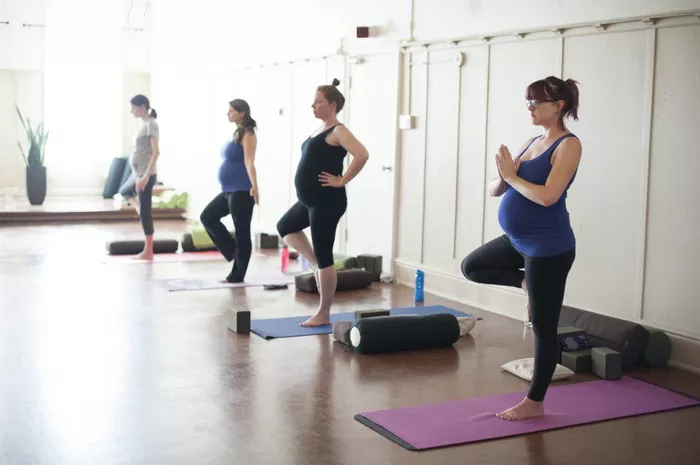Ashtanga Yoga, also known as “Eight – Limbed Yoga“, is a profound and systematic yoga system with a long – standing history. Rooted in ancient Indian philosophy, it provides a holistic approach to physical, mental, and spiritual well – being. This yoga style is not merely a set of physical postures but a complete path towards self – realization and inner peace.
The Eight Limbs of Ashtanga Yoga
Yama: Ethical Restraints
Yama represents the ethical foundation of Ashtanga Yoga. It consists of five principles:
Ahimsa (Non – violence): This principle extends beyond physical harm. It implies refraining from any thought, word, or action that causes harm, whether it’s to oneself or others. In daily life, it could mean choosing kind words over harsh criticism, or avoiding situations that might lead to conflict.
Satya (Truthfulness): Satya encourages practitioners to be honest in all aspects of life. It’s not just about telling the truth externally but also being true to one’s own feelings, beliefs, and values. Lying, even in small ways, can create inner disharmony, and by practicing Satya, we align our actions with our inner selves.
Asteya (Non – stealing): Asteya goes beyond the literal act of not taking what doesn’t belong to us. It also involves not coveting others’ possessions, opportunities, or qualities. By being content with what we have and not constantly desiring more, we free ourselves from the endless cycle of envy and greed.
Brahmacharya (Moderation or Celibacy): In the context of Ashtanga Yoga, Brahmacharya is about channeling one’s energy in a focused and purposeful way. For some, it may mean practicing celibacy to conserve and redirect sexual energy towards spiritual growth. For others, it can refer to moderation in all aspects of life, such as eating, speaking, and consuming media, to maintain a clear and balanced mind.
Aparigraha (Non – hoarding): Aparigraha is the principle of non – attachment to material possessions. It encourages us to let go of the need to accumulate excessive wealth, belongings, or even experiences. By not hoarding, we open ourselves up to the present moment and are less burdened by the past or future concerns related to possessions.
Niyama: Self – Discipline and Observances
Niyama focuses on self – improvement and personal discipline. It has five components:
Saucha (Purity): Saucha encompasses both physical and mental purity. Physically, it involves maintaining a clean body through proper hygiene and a healthy diet. Mentally, it means purifying the mind of negative thoughts, such as anger, jealousy, and hatred. Practicing meditation and positive self – talk can help in achieving mental purity.
Santosha (Contentment): Santosha is about finding contentment and satisfaction in the present moment. It’s not about complacency but rather accepting things as they are without constantly yearning for something different. By being content, we can experience joy and peace in our daily lives, regardless of external circumstances.
Tapas (Austerity or Self – Discipline): Tapas involves practicing self – discipline and endurance. It could be through physical practices like following a regular yoga routine, even on days when we don’t feel like it, or through mental practices such as controlling our thoughts and emotions. By enduring discomfort and challenges, we build inner strength and resilience.
Svadhyaya (Self – Study): Svadhyaya encourages the study of oneself, both physically and mentally. This can include reading spiritual texts, reflecting on one’s actions and experiences, and observing one’s thoughts and emotions. Through self – study, we gain a deeper understanding of who we are and how we can grow and evolve.
Isvara Pranidhana (Surrender to a Higher Power): Isvara Pranidhana is about surrendering to a higher power, whether it’s a personal concept of God, the universe, or a universal consciousness. It’s about letting go of the ego’s need for control and having faith that there is a greater plan at work. This surrender can bring a sense of peace and relief, as we trust that everything is happening for a reason.
Asana: Physical Postures
Asanas are the physical postures that most people associate with yoga. In Ashtanga Yoga, there are specific sequences of asanas. The practice of asanas has several benefits:
Physical Strength and Flexibility: Asanas help in building strength in various muscle groups. For example, poses like Warrior I and Warrior II strengthen the legs, core, and shoulders. At the same time, they also improve flexibility, as seen in poses such as the forward bends and backbends. The combination of strength and flexibility is crucial for maintaining a healthy body and preventing injuries.
Improved Balance: Many asanas in Ashtanga Yoga, such as Tree Pose and Half Moon Pose, focus on enhancing balance. Good balance is not only important for physical stability but also for mental concentration. When we are balanced physically, it becomes easier to find a sense of equilibrium in our minds.
Body Awareness: Through the practice of asanas, we become more aware of our bodies. We learn to feel the alignment of our bones, the engagement of our muscles, and the flow of energy within us. This body awareness can extend to our daily lives, helping us to move more efficiently and avoid postural problems.
Pranayama: Breath Control
Pranayama is the practice of controlling the breath, which is considered the life force energy (prana) in yoga. There are several types of pranayama techniques in Ashtanga Yoga:
Ujjayi Breath: Ujjayi breath is a characteristic breath in Ashtanga Yoga. It involves a slight constriction at the back of the throat, creating a soft, ocean – like sound. This breath helps to regulate the flow of air in and out of the lungs, calming the mind, and increasing the supply of oxygen to the body.
Nadi Shodhana (Alternate Nostril Breathing): In Nadi Shodhana, we alternate breathing through each nostril. This technique is believed to balance the two main energy channels (nadis) in the body, the ida and pingala, which are associated with the left and right sides of the body respectively. Balancing these channels can lead to a more harmonious state of mind and body.
Benefits of Pranayama: Pranayama helps to slow down the heart rate, reduce stress, and increase mental clarity. By controlling the breath, we can also influence our emotions. For example, slow, deep breaths can calm an agitated mind, while more energizing pranayama techniques can boost our mood and vitality.
Pratyahara: Withdrawal of the Senses
Pratyahara is the practice of withdrawing the senses from external stimuli. In our modern lives, we are constantly bombarded with sensory information from our phones, television, social media, and the environment around us. Pratyahara helps us to disconnect from this overstimulation and turn our attention inward.
Techniques for Pratyahara: One way to practice Pratyahara is through sensory deprivation exercises. For example, sitting in a quiet, dark room and focusing on the internal sensations rather than external sights or sounds. Another technique could be to close our eyes during a yoga practice and focus solely on the breath and the physical sensations in the body, without getting distracted by what we see around us.
Benefits of Pratyahara: By withdrawing the senses, we can reduce mental clutter and increase our ability to concentrate. It also helps us to become more aware of our inner thoughts and emotions, leading to a deeper understanding of ourselves.
Dharana: Concentration
Dharana is the practice of focusing the mind on a single point. In Ashtanga Yoga, this could be a specific object, such as a candle flame, a mantra, or a particular part of the body.
The Importance of Dharana: Concentration is essential for achieving deeper states of meditation. When we are able to focus our mind on one thing without getting distracted, we can enter a more profound state of mental absorption. In Ashtanga Yoga, Dharana is often practiced during asana and pranayama, by focusing on the breath, the movement of the body, or a specific drishti (gaze point).
Techniques to Improve Dharana: Regular meditation practice can significantly improve our ability to concentrate. Starting with short periods of focused attention and gradually increasing the duration can help train the mind. Using visualization techniques, such as imagining a peaceful scene in detail, can also enhance concentration.
Conclusion
Ashtanga Yoga, with its eight – fold path, offers a comprehensive and profound approach to physical, mental, and spiritual well – being. Each limb is interconnected and essential for the overall growth and development of the practitioner. The practices of Asana, Pranayama, Pratyahara, Dharana, Dhyana, and Samadhi then gradually lead us towards a deeper understanding of ourselves and the universe, ultimately culminating in the state of Samadhi, the highest form of spiritual realization.





















